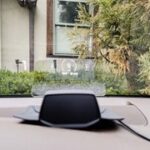For automotive enthusiasts and professionals, connecting your car to a laptop opens up a world of possibilities, from diagnostics to custom coding. While pre-made cables are available, creating your own Obd2 Cable For Laptop, specifically an ENET (Ethernet to OBD2) cable for BMW vehicles, can be a rewarding and cost-effective project. This guide will walk you through the process of making your own ENET OBD2 cable at home.
Materials You’ll Need to Build Your OBD2 Cable
Before you begin, gather the necessary tools and components. You can easily find these items online or at your local electronics store.
-
Soldering Kit: Essential for creating secure and lasting electrical connections.
- Example: https://amzn.to/2JVcr1h
-
Multimeter: A multimeter is crucial for testing the resistor and ensuring proper connections.
- Example: https://amzn.to/34dnAB8
-
Ethernet Cable (10 Feet): A standard Ethernet cable will be the base of your ENET cable.
- Example: https://amzn.to/3adGmw3
-
OBD2 Connector (Male): This connector plugs into your vehicle’s OBD2 port.
- Example: https://amzn.to/3qYUVJR
-
510 Ohm Resistor: This resistor is a critical component for the cable’s functionality.
- Example: https://amzn.to/3ad8WO8
-
Optional Combo Kit: For convenience, you can purchase a combo kit that includes soldering tools and a multimeter.
- Example: https://amzn.to/3qRcQSO
Step-by-Step Guide: Crafting Your OBD2 Cable
Follow these steps carefully to assemble your ENET OBD2 cable.
Step 1: Prepare the Ethernet Cable
Begin by cutting the Ethernet cable in half. Slide the cable protector and boot onto one end of the cut cable. This will provide strain relief and a professional finish to your cable.
Step 2: Expose the Ethernet Wires
Carefully remove the outer plastic jacket of the Ethernet cable to reveal the internal wires. You’ll see eight wires, each with a different color.
It’s important to identify each wire color and its corresponding pin number in the Ethernet standard (T568B is commonly used). Tin the exposed ends of the wires with solder. This will make them easier to connect to the OBD2 connector. For this DIY ENET cable, you will not need all eight wires. Specifically, the Blue, White/Blue, and White/Brown wires (typically associated with pins 4, 5, and 7 in some Ethernet configurations) can be cut off as they are not required for this application.
Step 3: Open the OBD2 Connector
Carefully open the OBD2 connector housing. Inside, you will see 16 pins, arranged in two rows of eight. These pins are numbered 1 to 16.
Step 4: Test the Resistor
Before soldering, it’s crucial to verify the resistance of your 510 Ohm resistor using a multimeter. Ensure the reading is within the 506-560 Ohm range for optimal performance. This step confirms the resistor is within the correct tolerance and will function as expected in your OBD2 cable.
Step 5: Solder the Wires According to the Pin Diagram
Refer to the pin diagram below to connect the Ethernet wires to the correct pins on the OBD2 connector. This diagram is specific for creating an ENET cable for BMW diagnostics and coding.
Pin Mapping:
| Ethernet Pin | Wire Color | OBD2 Pin |
|---|---|---|
| Pin 1 | White/Orange | Pin 3 |
| Pin 2 | Orange | Pin 11 |
| Pin 3 | White/Green | Pin 12 |
| Pin 6 | Green | Pin 13 |
| Pin 8 | Brown | Pin 4 & 5 |
Solder each Ethernet wire to its corresponding OBD2 pin as indicated in the table and diagram.
Step 6: Add the Resistor
Solder the 510 Ohm resistor to pins 8 and 16 of the OBD2 connector. This resistor is essential for proper communication in the ENET cable.
Final Steps and Usage
Once allSoldering is complete and you have double-checked your connections against the pin diagram, carefully close the OBD2 connector housing. Your DIY ENET OBD2 cable for laptop is now ready!
Connect the OBD2 end to your BMW’s OBD2 port and the Ethernet end to your laptop. You can now use diagnostic or coding software compatible with BMW ENET interfaces to communicate with your vehicle. Enjoy the enhanced control and insights into your BMW that this DIY cable provides!
